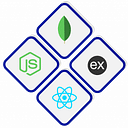Choosing the Best Backend Technology for Mobile App Development
In the fast-paced world of mobile app development, the backend plays a crucial role in ensuring seamless functionality, robust performance, and secure data management. Choosing the right backend technology is akin to laying a strong foundation for a skyscraper — it determines the stability and scalability of the entire structure. In this blog post, we will explore some of the best backend technologies for building mobile apps that cater to the diverse needs of developers and businesses.
1. Node.js: The Lightweight Powerhouse
Node.js has gained immense popularity for its ability to handle concurrent connections with ease, making it an excellent choice for real-time applications. Its non-blocking, event-driven architecture is particularly well-suited for mobile apps that require high responsiveness and low-latency communication. Node.js, coupled with the Express.js framework, provides a robust foundation for building scalable APIs, making it a top choice for mobile app developers.
2. Firebase: The Serverless All-in-One Platform
Firebase, developed by Google, is a serverless backend platform that offers a comprehensive suite of services, including a real-time NoSQL database, authentication, cloud functions, and more. Its ease of use and real-time capabilities make it an ideal choice for startups and small to medium-sized projects. Firebase’s seamless integration with popular frontend frameworks like React Native further enhances its appeal.
3. Django: The Pythonic Elegance
Django, a high-level Python web framework, is renowned for its simplicity, scalability, and speed. It follows the Model-View-Controller (MVC) architectural pattern, making it easy to organize code and build maintainable applications. Django Rest Framework (DRF) extends Django to facilitate the creation of powerful and flexible APIs, making it an excellent choice for mobile app developers who prefer Python.
4. Ruby on Rails: The Developer’s Delight
Ruby on Rails, often referred to as Rails, is a web application framework written in Ruby. Known for its convention over configuration and don’t repeat yourself (DRY) principles, Rails accelerates the development process by minimizing repetitive tasks. It offers seamless integration with frontend frameworks like React Native, making it an attractive option for developers who value convention and productivity.
5. Spring Boot: The Java Juggernaut
For enterprises and large-scale applications, Java remains a stalwart choice. Spring Boot, a part of the broader Spring framework, simplifies the development of Java-based applications by providing conventions for rapid development. Its modular architecture, coupled with a vast ecosystem of libraries and tools, makes it a strong contender for building scalable and enterprise-grade mobile backends.
The choice of backend technology for mobile app development depends on several factors, such as the project’s scale, requirements, and the expertise of the development team. There are various options available, each with its own strengths. Node.js is a lightweight and responsive choice, Firebase offers serverless simplicity, Django provides Pythonic elegance, Ruby on Rails is a developer’s delight, and Spring Boot is a powerful option for Java developers.
